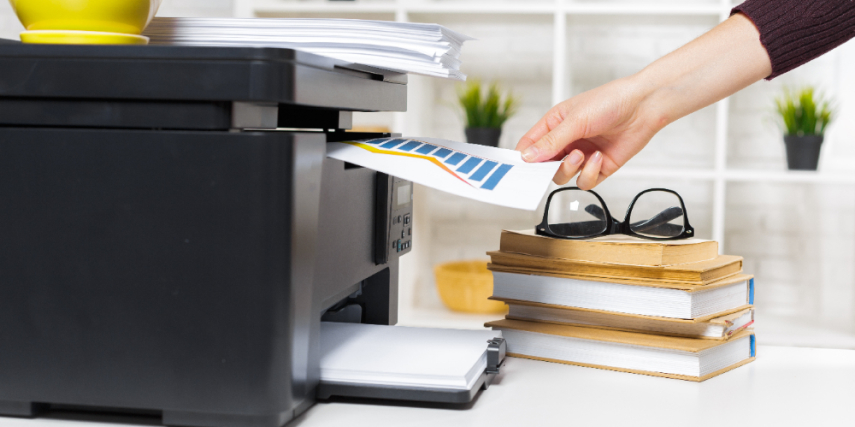The best office printers ensure smooth workflow and increased productivity and help you meet your printing needs. A superior office printer can support document management by simplifying tasks, improving efficiency, and reducing hours wasted in doing printer tasks. Moreover, such office printers can print in high volumes, scan, copy, and even fax while sustaining speed and dependability. In addition, other critical aspects involved in choosing a good office printer are print quality, cost-effectiveness, convenience of usage, and maintenance costs. Therefore, oneway to invest in your office for effective operation in this contemporary era is with the best office printers.
The top tips for choosing the best office printers
The right choice of office printer improves productivity and reduces costs. The difficulty is finding the best fit due to numerous choices. Herein is a guide through five key factors to help you select an ideal printer that suits an office’s needs and space.
1. Understand your needs: The first step in choosing the best office printer is understanding your office’s specific requirements. How often will the printer be used? Do you print many color documents, or just black and white? Knowing your printing volume will help narrow options since some printers are designed for high-volume printing, while others are better for occasional use. For businesses with a lot of printing, printers with higher page-per-minute rates and larger paper tray capacities can be considered.
2. Consider print speed and efficiency: Speed and efficiency are two major precepts one should consider when deciding on an office printer. Most printers have their standard measure in pages per minute. If one has a busy office, you want a printer that can print out high volumes without slowing workflow. Efficiency can also refer to costs incurred in printing. Printers with low cost-per-page ratios will save your business over the long run. Look for a printer that balances print speed and operational efficiency.
3. Look for connectivity options: Today, in an advanced office setting, a printer hasmultiple ways of connecting. Modern printers provide various options, including USB, Wi-Fi, Bluetooth, and Ethernet ports. If your office heavily relies on wireless devices such as laptops, tablets, or smart phones, ensure the printer provides Wi-Fi capabilities and supports mobile printing solutions or the manufacturer’s app. This will enable staff to print documents directly from their mobile devices without necessarily having to connect physically to the printer.
4. Assess printer maintenance: Besides being more economical to repair, an easy-to-maintain and durable printer reduces the minutes your office isn’t running as usual. Check printers for good feedback regarding their robustness and those offering great warranties or service plans. Many have maintenance free for a year or certain page quotas. Second, consider how much the printer requires in upkeep. Some printers require it more than others do, and you certainly do not need a machine that will break down on you constantly or demand time and attention from your staff.
5. Consider the size and space requirements: Other factors would include size, which is important to small offices or any space where the room is confined. First, consider the exact place the printer will sit in and measure to ensure that the device will fit nicely and not clutter the space. Office printers come in big sizes for large offices to carry out other office functions such as scanning and faxing, so consider if your office will accommodate these sorts of printers. You might consider whether the printer offers features that can help with space optimization, such as stackable trays or a compact design.
Final words
Overall, the best office printer can be chosen based on criteria such as print volume, speed, cost-effectiveness, and connectivity. Laser printers are best suited for high-volume printing, while inkjet printers are good to go with color-intensive prints. Moreover, for businesses that require large-format and detailed drawings or blueprints-such as architectural firmsa plotter printer is needed. It all depends on what your office needs, balancing functionality, price, and reliability for maximum productivity.

